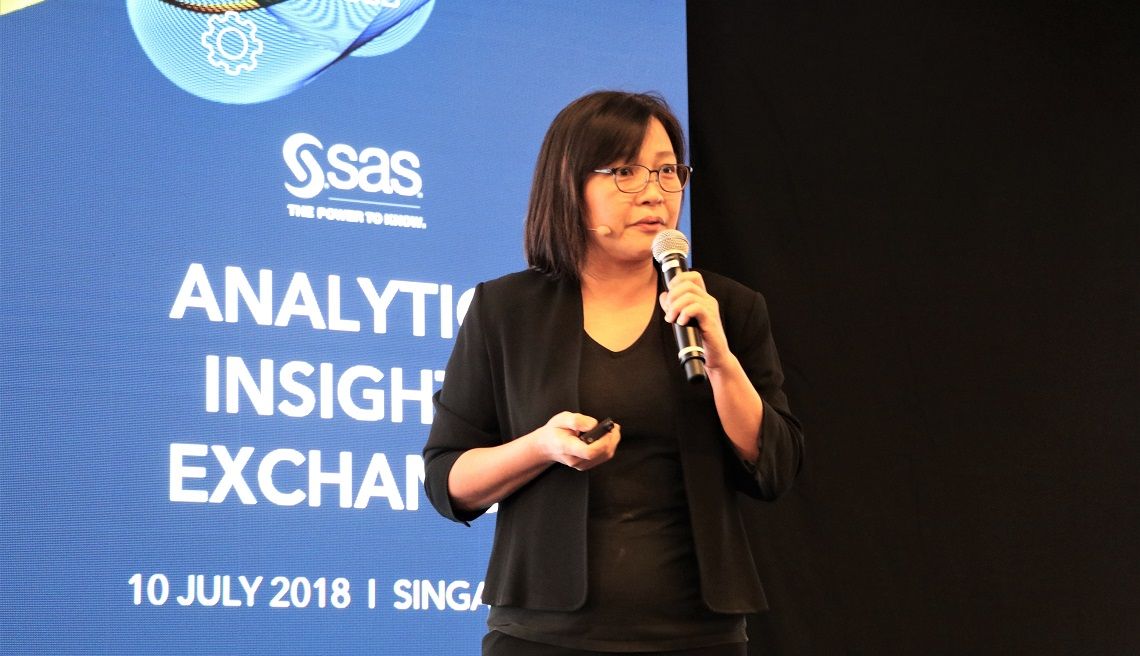How machine learning helps Singapore swat dengue
By Nurfilzah Rohaidi
Dr Ng Lee Ching, Director of the National Environment Agency's Environmental Health Institute in Singapore, on how the country is predicting clusters.

Dengue is an environmental disease, and Singapore’s environment is the ideal breeding ground for it, said Dr Ng Lee Ching, Director of the National Environment Agency (NEA)'s Environmental Health Institute in Singapore. “Weather, population density, age of buildings, and extent of urbanisation as well” - these parameters are just a few that contribute to bouts of dengue infections that plague the tropical country, she explained.
The environment agency is turning to machine learning and data analytics to predict where clusters may form, up to a year in advance, and then prevent mosquitoes from breeding Ng shared at the recent SAS Analytics Insights Exchange supported by GovInsider. This case study is not only effective in Singapore, but could be used across the world to tackle malaria and other tropical diseases as well.
Data-driven dengue models
The NEA has been collecting data on dengue for years and displaying them on interactive maps on its website for citizens to avoid, but “this is reactive - that means it is already going on, there is already dengue transmission”.
Ng’s team took ten years’ worth of data on dengue clusters all over Singapore and analysed it together with other parameters - weather, built environment, demographics - to determine where high-risk spots are. They use these data to train their predictive models. “This actually helps us to pre-empt - go in and clean up, put more efforts into checks and inspections in these areas,” she said.
There are 50,000 mosquito traps dispersed across Singapore’s neighbourhoods, and currently, NEA officers need to manually check each of them every two weeks. With predictive models, “we can concentrate on a specific high risk area. That is really important for optimisation of resources,” Ng explained. “We don't have the resources to go around every single home.”
Preparing for clusters
NEA successfully used predictive modelling to manage the 2013 dengue epidemic, which saw a record 842 dengue cases in a single week. “In January, we predicted an outbreak. So what do we do? Preparedness - diagnostic kits, hospital beds, make sure that fogging insecticides are ready,” said Ng.

And just this year, the agency unveiled ‘smart gravitraps’, mosquito traps that are equipped with sensors that identify mosquitoes that fly into them. At the moment, researchers have to identify species from trapping the insects and examining them under a microscope.
These smart devices could also be integrated with NEA’s existing data systems. “In the future, we hope that these traps will be in the field but, while sitting in the office, we can tell in real-time that we have caught which mosquito,” Ng remarked.
Lab tests in March revealed that these smart mosquito traps can accurately count the number of trapped mosquitoes and identify species and gender to a good level of accuracy, according to a local media report. The sensors transmit data to a database that contains ‘signatures’ that are unique to each species, the report said.
The environment agency also works closely with partners across industry and academia to collect, analyse and make sense of all the data across various contributing factors, NEA’s Ng continued. These can include meteorological data to gain a better understanding of the climate and humidity levels, and satellite imagery to identify if a certain area is urbanised.
In the future, genetic data could help detect dengue outbreaks and forecast its spread even more accurately. “Genomic data streams” from all over the island would provide real-time insights as an outbreak develops, according to Dr Swaine Chen, Senior Research Scientist at the Genome Institute of Singapore.
The threat of dengue can be at best, a pesky fact of life, and at worst, a matter of life and death. Being able to predict these trends ensures that government can act quickly, and ultimately save citizens' lives.